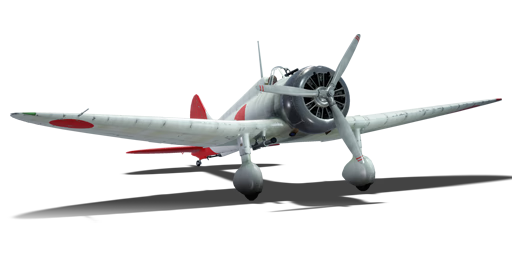



The A5M, designated as the Type 96 Carrier-based Fighter (九六式艦上戦闘機), was the world's first carrier-borne monoplane, developed by Mitsubishi for the IJNAS in 1934 and adopted in 1936. Being a marvel of early aviation, the A5M, which started out as company designation Ka-14, was a creation of Jiro Horikoshi and his team (the designer that would later develop the famous A6M 'Zero'). Serving the Navy well during the Second Sino-Japanese War, it took part in the world's first aerial skirmishes between monoplane fighters built of mostly metal against Chinese P-26 'Peashooters', where it outperformed the Chinese aerial units by manoeuvrability and robust construction. This early workhorse of the Imperial Navy Air Service was highly favoured by its aircrews and fared well in battle. By 1938, the main rival of the A5M would become the fast and heavily armed Polikarpov I-16 flown by both Chinese pilots and Soviet volunteers.
The A5M4 has been in the game since the start of the Open Beta Test prior to Update 1.27, and translates exactly over from reality, leading in monoplane manoeuvrability at the early ranks. It allows the pilot to evade and manoeuvre around their adversaries, as well as a presenting a decent airframe that can take a beating from regular munitions. However, it lacks in damage output, being equipped only with two 7.7 mm machine guns.
flaps
flaps
flaps
brake
control
| Belt | Belt filling | Armor penetration (mm) at a distance: | |||||
|---|---|---|---|---|---|---|---|
| 10 m | 100 m | 500 m | 1000 m | 1500 m | 2000 m | ||
| T/AP/IAI/AP/I | 13 | 12 | 7 | 3 | 2 | 0 | |
| T/AP/IAI/AP | 13 | 12 | 7 | 3 | 2 | 0 | |
| T/T/T/AP | 13 | 12 | 7 | 3 | 2 | 0 | |
| I/AP/AP/AP/IAI | 13 | 12 | 7 | 3 | 2 | 0 | |












Flight performance | |
|---|---|
Survivability |
|---|
Weaponry |
|---|